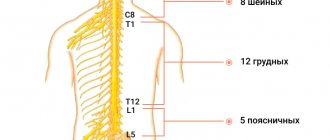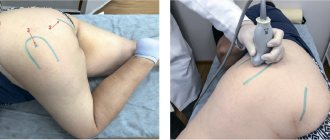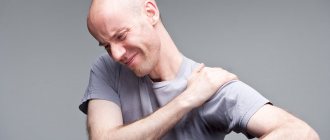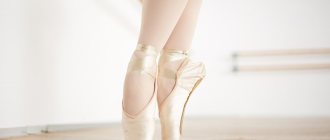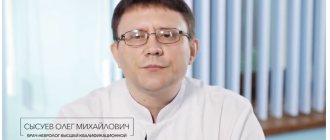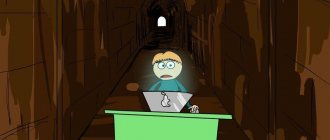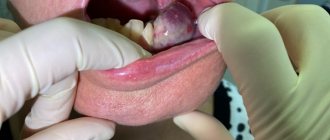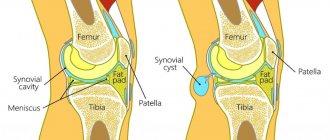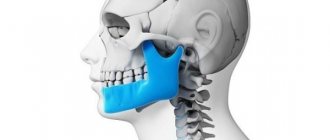- home
- Treatment programs
- Treatment of diseases of the musculoskeletal system and connective tissues
The musculoskeletal system is one of the first to be formed in the human body, and it is the framework on which our body rests. Throughout life, joints endure the tests of weight, time, illness and irresponsible attitude towards them, undergo irreversible changes and at some point fail.
The effectiveness of spa treatment
Diseases of connective tissues and various disorders of the musculoskeletal system, unfortunately, are no longer a problem exclusively for the elderly population, but increasingly appear at a younger age. Not always noticeable in the first stages, after a few years they develop into a chronic stage.
Treatment of diseases of the musculoskeletal system is a long process, as a result of which the restorative functions of the whole organism are activated. That is why in such cases regular sanatorium-resort rehabilitation treatment is indicated.
Painful symptoms and inflammatory processes can be relieved in the first weeks of treatment. This makes life easier for patients and promotes further progress in recovery.
Complex of health procedures for joints
- physiotherapy;
- training sessions;
- swimming;
- baths;
- heat therapy;
- mud therapy;
- massage;
- physiotherapy;
- compresses;
- hirudotherapy;
- aromatherapy;
- magnetic therapy;
- homeopathy.
All this, coupled with fresh air, a favorable climatic zone, in which health-improving complexes are usually located, proper balanced nutrition and rest, contributes to rapid treatment and recovery.
Important!
Patients with arthrosis should visit a specialized sanatorium at least once a year. Patients living in this rhythm note the disappearance of pain and absence of symptoms for up to 8 months.
Purpose of the program
At the Utes sanatorium you will receive qualified assistance in supporting your health. You will again feel lightness in your body and the desire to move forward towards happy changes in life.
| Indications: | Expected effect: |
| Ankylosing spondylitis | reduction or disappearance of the manifestations of the main clinical symptoms and laboratory indicators of the inflammatory process, |
| spondylosis | |
| idleness | |
| arthrosis of the hip joint | improving the functions of the spine and joints |
| gonarthrosis | increased chest excursion, |
| poor posture | improving quality of life, |
| arthritis | restoration of range of motion |
| polyarthritis | reduction of sensitivity disorders and vascular-trophic disorders. |
| osteoparosis | |
| osteocondritis of the spine |
Features of treatment of joints in sanatoriums of Crimea
Even expensive medications and long courses of physiotherapeutic treatment do not allow you to completely get rid of arthritis and arthrosis. Unique treatment of joints in Crimean sanatoriums allows you to cope with diseases; it is based on the following types of therapy:
- mud therapy (local applications and wraps);
- balneotherapy (healing baths and various forms of therapeutic shower);
- climatotherapy (sun and air baths, swimming in the sea);
- massage;
- special types of physiotherapy;
- physiotherapy;
- dietary food.
Comprehensive wellness allows you to feel visible results within a few days; the procedures are simple and painless. It is especially worth highlighting innovative methods of physiotherapy; they are carried out using natural ingredients. The method of galvanic mud resembles classical electrophoresis, but the electrodes are applied to the mud application. Among the health resorts that practice treatment of joints in Crimea, the best sanatorium is “Sacropolis”, it is located in the Saki resort.
Previous NextThe healing mud and brine of the local lake have made this resort famous throughout the world; their use forms the basis of treatment programs for joints. Applications are made with the mud and physiotherapy is performed, and brine is used to prepare medicinal baths and is used in the form of local irrigation. The Crimean peninsula is also famous for its special climatic conditions. For arthritis and arthrosis, sun and air baths are recommended, and sand baths are considered one of the most unusual types of climate therapy. Anyone suffering from spinal diseases and chronic joint diseases should visit the sanatorium at the Saki resort. The popular Saki sanatorium for the treatment of joints will allow you not only to get rid of serious diseases, but also to have a good rest on the Black Sea coast.
Free treatment for citizens of the Russian Federation at the expense of federal funds and compulsory medical insurance funds
Organization of hospitalization for the purpose of orthopedic, neurosurgical treatment, as well as treatment of various injuries is carried out according to the “one window” principle. To do this, the patient (or the person representing him) just needs to write an email stating his question (subject line: “treatment in the trauma department”).
To be admitted to a clinic under a federal quota, the patient must send photocopies of the following documents by email:
- passport;
- compulsory health insurance policy;
- SNILS (pension insurance certificate);
- data from medical studies.
- You can obtain additional information by calling the multi-channel information and reference service telephone number: 8-800-25-03-03-2 (free for calls from Russian regions).
What are the common symptoms of cardiovascular disease?
Symptoms of a heart attack include:
- pain or discomfort in the middle of the chest;
- pain or discomfort in the arms, left shoulder, elbows, jaw or back.
- difficulty breathing or shortness of breath;
- nausea or vomiting;
- feeling dizzy or losing consciousness;
- the person breaks out in a cold sweat and becomes pale.
- Women are more likely to experience shortness of breath, nausea, vomiting, and back and jaw pain.
The most common symptom of a stroke is sudden weakness in the face, most often on one side, arm or leg. Other symptoms include sudden numbness of the face, especially on one side, arms or legs; confusion; difficulty speaking or difficulty understanding speech; difficulty seeing in one or both eyes; difficulty walking, dizziness, loss of balance or coordination; severe headache, as well as loss of consciousness or unconsciousness.
Basic facts about vascular diseases:
- Cardiovascular disease (CVD) is the leading cause of death worldwide: no other cause causes more deaths each year than CVD.
- An estimated 17.9 million people died from CVDs in 2021, accounting for 31% of all deaths worldwide. 85% of these deaths were due to heart attack and stroke.
- More than 75% of deaths from CVDs occur in countries with low and middle living standards.
- Of the 17 million deaths from noncommunicable diseases before the age of 70, 82% occur in low- and middle-income countries, and 37% are caused by CVDs.
- Most cardiovascular diseases can be prevented by reducing risk factors: tobacco use, poor and excessive diet, lack of physical activity and alcohol abuse.
- People suffering from CVD or at high risk of such diseases need early identification of risk factors and lifestyle modifications in order to reduce their impact on the person.
Cardiovascular diseases are a group of diseases of the heart and blood vessels that include:
- coronary heart disease - a disease of the blood vessels that supply blood to the heart muscle;
- atherosclerosis, arterial hypertension;
- cerebrovascular disease - a disease of the blood vessels that supply blood to the brain;
- Peripheral artery disease - disease of the blood vessels that supply blood to the arms and legs;
- rheumatic carditis - damage to the heart muscle and heart valves as a result of a rheumatic attack caused by streptococcal bacteria;
- congenital heart disease – deformations of the structure of the heart existing from birth;
- Deep vein thrombosis and pulmonary embolism - the formation of blood clots in the leg veins that can dislodge and move towards the heart and lungs.
Complications of CVD significantly change the quality of life.
The basis of CVD prevention : proper nutrition, correction of body weight, active lifestyle, physical activity, therapeutic exercises, swimming, fighting bad habits: smoking, drinking alcohol, drugs, following doctor’s recommendations (monitoring blood pressure, glucose and lipids in the blood ).
Quitting tobacco use, reducing salt intake, consuming enough fruits and vegetables, regular physical activity and avoiding harmful use of alcohol have been shown to reduce the risk of developing cardiovascular disease. To increase people's motivation to choose and maintain healthy behaviors, health policies are needed to create an enabling environment for healthy lifestyles to be possible and affordable.
There are also a number of factors that influence the development of chronic diseases, or underlying causes. They reflect the main driving forces leading to social, economic and cultural changes - globalization, urbanization and population aging. Other determinants of CVD include low standard of living, stress and hereditary factors.
Arthroscopy
Our clinic performs arthroscopy of most large joints: hip, knee, shoulder, ankle.
Diagnostic and therapeutic arthroscopy of the knee joint is performed for the following injuries and diseases:
- Old and acute injuries of the menisci.
- Old and acute injuries of the cruciate ligaments, as well as revision surgeries.
- Damage to intra-articular cartilage due to deforming arthrosis.
- Chronic synovitis of various etiologies.
- Chronic recurrent patellar instability.
- Hypertrophied fat pad syndrome (Hoff syndrome), hypertrophied mediapatellar fold syndrome
- Intra-articular free bodies.
- Old and acute injuries of the medial and lateral collateral ligaments of the knee joint.
Diagnostic and therapeutic arthroscopy of the shoulder joint is performed for the following injuries and diseases:
- Primary and habitual shoulder dislocation (including revision surgeries).
- Old and acute tears of the rotator cuff.
- Calcific rotator cuff tendonitis.
- Damage to the biceps tendon.
- Adhesive capsulitis.
- Synovial chondromatosis.
- Subacromial impingement syndrome.
History of the Saki resort
The history of the Saki resort began in the 9th century. BC e. It was during this period that the fertile Crimean lands began to be inhabited by Scythian tribes. At that ancient time there were oak forests, beech groves and lakes with their healing mud.
The development of the region continued for more than one century. In the 19th century Count Mikhail Vorontsov contributed to the construction of the first mud bath in this corner. This became the impetus for the development of medical tourism in Saki. People came here from Poland, France, Italy.
In 1832, the first hotel was built in Saki. Nabaldanov and Burdenko, two great doctors of Russia, elevate mud treatment to a professional level. For this exemplary work in 1912, the Saki resort received a gold medal from the Russian Technical Society.
Future plans included the construction of health resorts along the entire Black Sea coast in Saki. However, these plans were prevented by the events of the Second World War - the sanatoriums were completely destroyed. The revival of the resort began in 1945. It was in this year, on September 15, that the first mud bath opened its doors.
Contraindications to sanatorium treatment
Despite the beneficial effects of sanatorium treatment, there are a number of contraindications that you should be aware of.
This type of treatment is prohibited if:
- Circulatory disorders in the brain.
- Amyotrophic atherosclerosis.
- Parkinson's disease.
- Epilepsy.
- Tuberculosis of all types in the active phase.
- Chronic osteomyelitis, subject to the presence of large foreign metal objects or sequestration in the osteomyelitic focus.
- ECG pathologies in rough form.
- Blood diseases in the acute phase and acute period.
- Polyarthritis is not specifically infectious in a septic form.
- Mental disorders.
- Multiple sclerosis.
- Syringobulbia.
- Traumatic exhaustion.
- Myocardial infarction.
- Syringomyelia.
- Chronic pyelonephritis with pronounced impairment of kidney function.
- Hypertension II/V degree.
- Urosepsis.
- Diseases of the thyroid gland.
- Pregnancy at any stage.
- Paralysis.
- Significant pelvic disorders.
- Progressive polyarthritis.
- Neoplasms of malignant and benign nature.
- Drug addiction, alcoholism.
If you have other diseases, a trip to the sanatorium should be discussed with your doctor. There are a number of specific diseases, the presence of which prevents a trip to a health resort.
